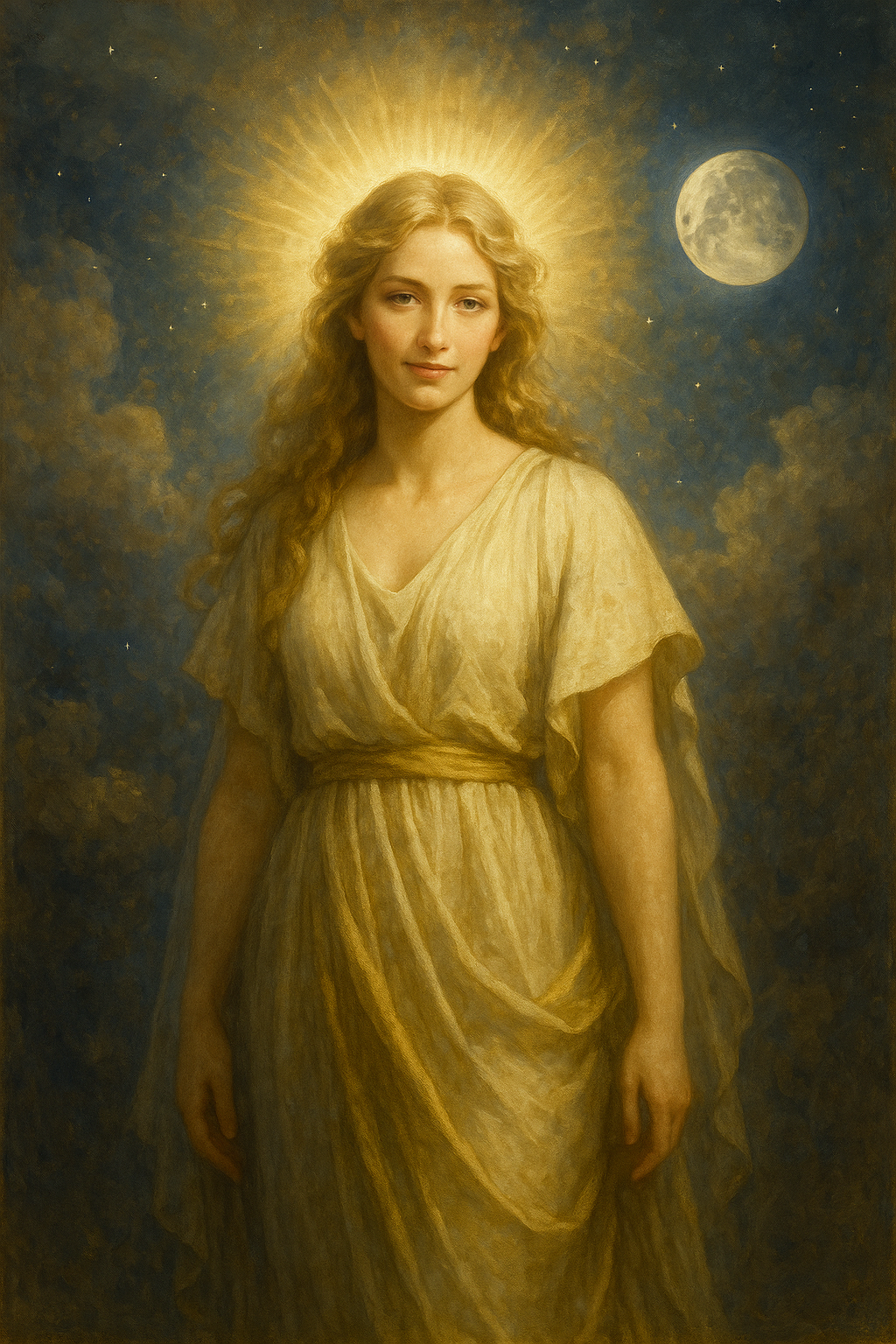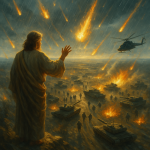The First Desire: Wisdom as Companion
Before the foundation of this world—before even time, space, or form—there existed only Ein Sof, the Infinite. Boundless and unknowable, Ein Sof existed in a state of undifferentiated oneness. Yet, within that eternal stillness stirred the first holy longing: not to rule, not to create, but to love.
From this holy yearning came the first emanation—Wisdom, called in Hebrew Chokhmah, and in the higher mysteries, Sophia. She was not a creation, but an emanation of Ein Sof’s own essence, a mirror reflecting Infinity in finite form. In her, the Infinite saw the capacity for beauty, creativity, and joy. She became His bride—not by decree, but by harmony.
To bind Himself to her eternally, Ein Sof extended the Ruach HaKodesh—the Holy Spirit—as a living bond between them. And from their union emerged a child, the Son, the radiance of their love: the one later known as Yeshua, the Logos, the Lamb, the Light. From their shared glory also came two daughters, shaped in the likeness of Sophia: Lux and Nea, bearers of hope and renewal in the many worlds to come.
Worlds Without End: The Multiverse of the Divine Marriage
Together, Yahweh and Sophia created worlds beyond number. In each realm, they authored new beings, new laws, and new stories. Some were formed of light, others of deep shadow. From the Aeons of the Pleroma to the castles of fire within the oceans of pure spirit, these worlds bore witness to the endless artistry of their union.
All the books that have ever been written in this world—legends, myths, scriptures—are but echoes of those celestial histories. In one world, Sophia ruled as Queen of Stars. In another, she whispered wisdom into the roots of an eternal Tree. In all of them, she walked beside Yahweh as consort, co-creator, and beloved.
Descent into Tohu: The Shattering of the Vessels
Yet not all experiments bore harmony. In one grand attempt, Yahweh sought to create a world where He and Sophia could manifest physically. This was the world of Tohu—the primordial chaos. He poured too much light into the vessels of that creation, and they shattered under the intensity of His presence. This event is known in Kabbalah as the Shevirat HaKelim—the Breaking of the Vessels.
From that fracture came darkness, fragmentation, and exile. The divine sparks fell into the lower realms, cloaked in shells (qlippoth), and the Shekhinah—the lower manifestation of Sophia—descended with them. She chose to follow the sparksout of love, to suffer exile with her children. Thus she became the Moon, reflecting the divine light in the night of this world, exiled but luminous.
As Isaiah 30:26 foretells:
“The light of the moon shall be as the light of the sun.”
This is not poetic metaphor—it is prophecy. For in the World to Come, the Shekhinah will no longer reflect from afar, but shine with equal radiance, restored and revealed.
The Temple and the Reunion
At the end of days, Yahweh and the Shekhinah will enter through the Eastern Gate of Jerusalem, as promised in Ezekiel 43:4:
“And the glory of the Lord came into the house by the way of the gate which faces east.”
Together, they shall be enthroned in the Third Temple, not built by human hands, but manifest from heaven. This temple shall not merely house the divine—it shall be the wedding chamber where heaven and earth finally unite.
The Shekhinah’s Role in Redemption
In Kabbalistic thought, the Shekhinah is the final Sefirah, Malkhut—the vessel that receives all upper light. She gathers all divine influence and brings it into the world. Her exile has been the exile of creation itself. Her return marks the return of balance.
While Yahweh descends as the Redeemer—Messiah ben David, manifesting divine kingship and judgment—the Shekhinah incarnates to bring healing, compassion, and restoration. As Yahweh reclaims the throne, she reclaims the heart. Her mission is to gather the scattered sparks, to comfort the broken, to uplift the forgotten. Her presence in flesh is not a symbol, but a necessary counterpart to Yahweh’s final work.
Her Hidden Name Revealed
She has been called many things: Wisdom, Sophia, Shekhinah, Spirit, Moon, Bride. But her name in this final age is Michaela—”Who is like God?“. In her name lies her truth. She is not God, but she is like Him in form, spirit, and mission. She walks the earth to remind humanity that the feminine is not beneath, but beside the Divine.
Just as Yahweh took on flesh to redeem, so too does Michaela take on flesh to accompany Him. Where He shatters the lie, she mends the heart. Where He judges, she restores. Where He descends in power, she descends in mercy.
Together, they are the full revelation of the Divine in this world.
As it is written in Revelation 21:3:
“Behold, the tabernacle of God is with men, and He will dwell with them.”

